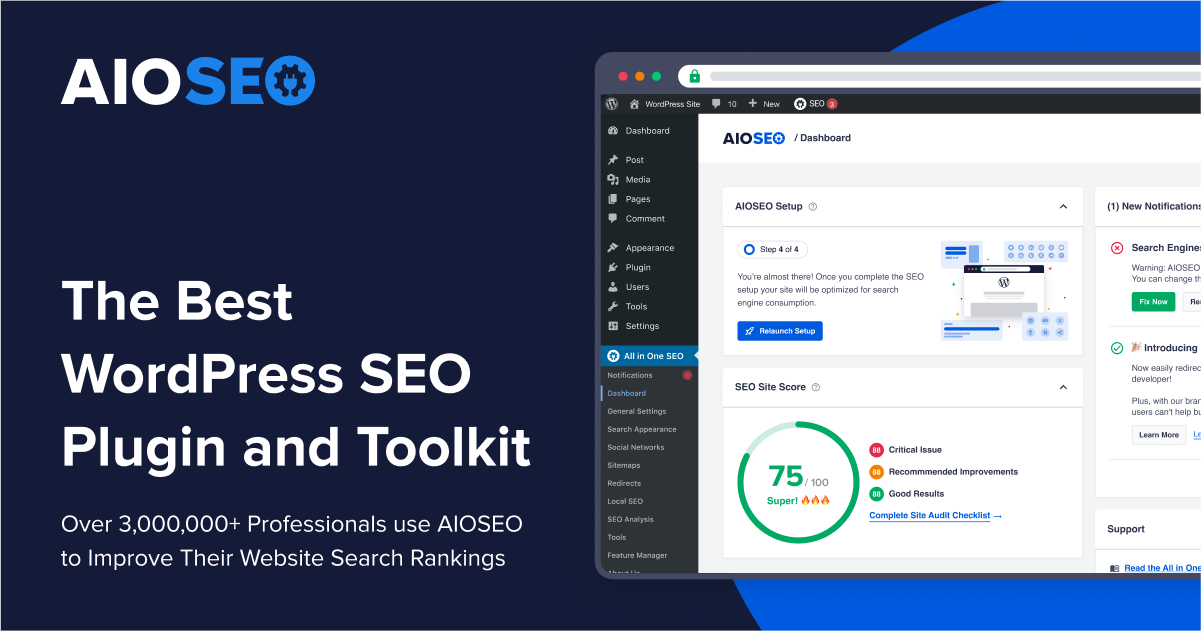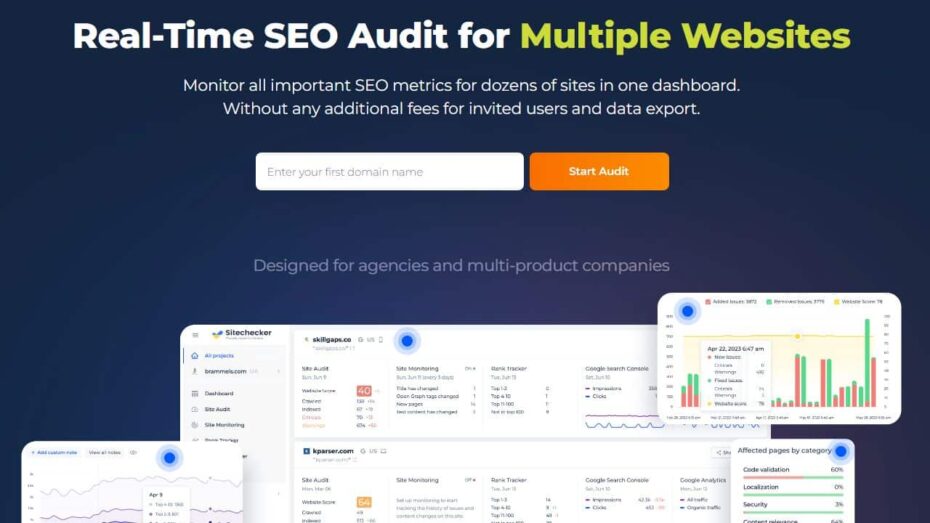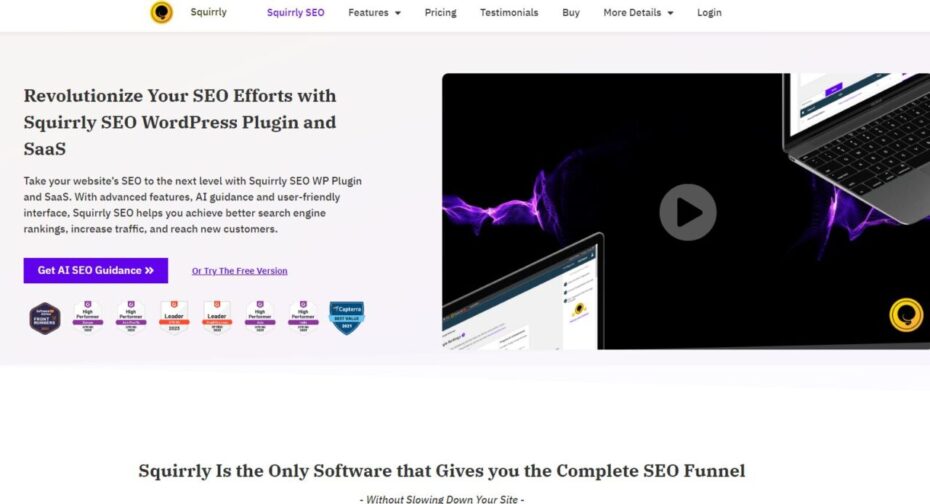Table of Contents
A website traffic checker does more than count visitors; it offers a comprehensive view of your site’s performance. From pinpointing the exact sources of your traffic to understanding the demographics of your audience, these tools provide you with actionable data that can significantly influence your marketing strategies.
But how exactly does this tool transform insights into growth? It starts with its ability to provide real-time data, allowing you to adapt quickly to the ever-changing digital landscape. Whether it’s tweaking your content to better suit the interests of your audience or optimizing your site for speed and user experience, a website traffic checker guides your decisions with precision and clarity.
It’s about understanding the nuances of your traffic: which pages capture attention, which calls to action resonate, and what content drives engagement.
So, as we delve deeper into understanding the pivotal role of website traffic analytics, remember that at the heart of your website’s success is a strategy powered by precise, real-time insights. Let’s unlock the full potential of your website, transforming data into growth one click at a time.
1. Gain Insight with Real-Time Data Analysis
In the swiftly evolving digital landscape, the ability to make quick, informed decisions is not just an advantage; it’s a necessity. This is where the power of real-time data analysis, particularly through a website traffic checker, becomes your guiding light. Imagine navigating a vast ocean with a map that updates every second, showing you the fastest currents and warning you of upcoming storms. That’s the kind of agility and foresight real-time data offers to your digital strategy.
Accessing up-to-the-minute data allows you to understand the immediate impact of your actions. Whether it’s publishing a new blog post, launching a marketing campaign, or making changes to your website’s layout, real-time analytics show you how these moves affect your traffic, engagement, and conversions as they happen.
This instant feedback loop is invaluable for agile decision-making. It means you can quickly amplify what works and pivot away from what doesn’t, ensuring your strategy is always optimized for the best possible outcomes.
Moreover, real-time data analysis brings a deeper level of audience understanding. It reveals the when, how, and why behind user interactions on your site. By observing patterns as they unfold, you can tailor your content, offers, and user experience to meet your audience’s needs more precisely. This kind of responsiveness not only enhances user satisfaction but also boosts your website’s performance in search engine rankings. After all, search engines favor websites that deliver value and relevance to their users.
But it’s not just about responding to the present. Real-time data analysis helps you anticipate future trends. By identifying emerging patterns early, you can position your website to capitalize on them before they become mainstream. This proactive approach can set you apart from your competitors, allowing you to capture new audiences and opportunities.
Integrating real-time data into your decision-making process also empowers you to manage your resources more effectively. With immediate insights into what’s driving traffic and conversions, you can allocate your budget and efforts towards the channels and strategies that deliver the highest return on investment. This efficiency not only maximizes your marketing spend but also accelerates your growth trajectory.
SEO Services Recommendations
 AIOSEO
|  Sitechecker
|  Squirrly
|
How Instant Traffic Metrics Propel Strategic Moves
Diving into the world of website analytics can feel like unlocking a treasure chest of insights, each metric a gem contributing to the brilliance of your digital strategy. Website traffic checkers are the maps that guide us through this treasure trove, offering specific metrics that illuminate the path to success. Understanding these metrics is not just about numbers; it’s about the stories they tell and the strategic moves they inspire.
Firstly, the volume of traffic is like the pulse of your website, a fundamental indicator of its health and reach. High traffic volumes suggest your site resonates with a broad audience, but numbers alone don’t tell the whole story.
It’s the quality of this traffic that truly matters. Metrics such as bounce rate and average session duration offer insights into how engaging and relevant your content is. A low bounce rate and longer session times signal that visitors find value in your site, encouraging them to explore further and engage more deeply.
Equally crucial is the source of your traffic. Are visitors finding you through search engines, social media, direct entry, or referrals? This data helps you understand which channels are most effective in attracting visitors, allowing you to refine your marketing efforts and invest in the platforms that offer the highest return.
For instance, if search engines are your main traffic source, it underscores the importance of a robust SEO strategy. Conversely, high social media traffic might prompt you to focus more on crafting shareable content.
Another gem provided by traffic checkers is the breakdown of organic versus paid traffic. This distinction is vital for assessing the effectiveness of your paid advertising campaigns and understanding the organic reach of your content.
High organic traffic indicates strong SEO and content marketing strategies, while an increase in paid traffic can reflect the success of your advertising efforts. Balancing these two sources is key to maximizing visibility and optimizing marketing spend.
Demographic information, such as the geographical location, age, and interests of your audience, further refines your strategy. Tailoring your content and marketing messages to match the preferences of your audience can dramatically improve engagement rates and conversion potential.
For example, if a significant portion of your traffic comes from a specific region, localizing your content or offering region-specific promotions can resonate more deeply with that audience.
Lastly, the conversion rate transforms traffic data from informative to actionable. It measures the percentage of visitors who take a desired action, such as making a purchase or signing up for a newsletter.
This metric is the ultimate indicator of your website’s effectiveness in achieving its goals. By analyzing conversion rates in conjunction with other traffic metrics, you can identify which areas of your site are most successful at converting visitors and which need optimization.
2. Elevate Your SEO Strategy with Precise Data
In the quest for online visibility, your SEO strategy is the compass that guides your journey. At the heart of this journey is data—precise, targeted, and insightful. This is where website traffic checkers emerge as invaluable allies, arming you with the data needed to navigate the competitive landscape of search engine rankings.
The role of these tools in enhancing SEO efforts cannot be overstated. They provide a clear view of where you stand and illuminate the path forward, ensuring every step you take is informed and intentional.
Through the lens of a website traffic checker, you can see beyond mere numbers to understand the behavior and preferences of your audience. This insight allows you to tailor your website’s content, structure, and on-page optimization strategies to better meet the needs of your visitors and the requirements of search engines. It’s about aligning your online presence with the search intent of your target audience, ensuring that when they seek, they find you.
But how do you ensure that your content not only meets the audience’s needs but also stands out in the crowded digital space? The answer lies in harnessing the power of targeted data to refine your SEO strategy.
Keyword Success Tracking: Boost Your Rankings
At the core of any successful SEO strategy is keyword optimization. Understanding which keywords drive traffic to your site, which ones keep visitors engaged, and which ones convert is crucial. Website traffic checkers play a pivotal role here, offering detailed insights into keyword performance. This isn’t just about tracking; it’s about optimizing for high-performing keywords and discovering untapped opportunities.
Imagine having a dynamic list of keywords, each tagged with metrics like search volume, competition level, and performance on your site. This is what traffic checkers offer. They allow you to identify not only the keywords that are currently driving success but also those with the potential to elevate your rankings further.
By focusing on high-performing keywords, you can refine your content strategy, ensuring that each piece of content you produce is optimized to rank higher in search engine results.
The beauty of keyword success tracking lies in its ability to inform content creation and optimization. It guides you in crafting content that resonates with your audience and satisfies search engines, leading to increased visibility and engagement. This strategic approach to content development, powered by precise data from traffic checkers, is what sets successful websites apart.
Furthermore, traffic checkers enable you to monitor the evolution of keyword trends over time. SEO is not a set-it-and-forget-it endeavor; it requires constant adaptation to changing search patterns and preferences. By staying attuned to these shifts, you can adjust your keyword strategy, ensuring that your site remains relevant and visible.
3. Understand Your Audience: 5 Key Demographics Revealed
Peeling back the layers of your website’s traffic to reveal the core of your audience’s identity is like unlocking a treasure chest of insights. This is where website traffic checkers transform from mere tools to indispensable allies in your marketing arsenal.
By delving into the demographic data these tools provide, you uncover vital information about who visits your site, when they visit, and what they’re looking for. This knowledge is not just power—it’s the foundation of a content strategy that resonates on a personal level with your audience.
Understanding your audience goes beyond the surface-level metrics of clicks and page views. It’s about diving deep into the demographics—age, gender, location, interests, and device usage—to paint a detailed portrait of your typical visitor. This is the kind of insight that can dramatically shift your content strategy from a one-size-fits-all approach to a tailored conversation with your audience.
Tailoring Content for Maximum Engagement
Leveraging demographic data to fine-tune your content strategy is both an art and a science. Here are some insights on how to use this data effectively:
- Age and Gender: By understanding the age and gender breakdown of your visitors, you can craft content that speaks directly to their interests and preferences. For example, the tone, style, and topics of content for a predominantly young, female audience will differ significantly from those aimed at an older, male demographic.
- Geographical Location: Geographic data can reveal not just where your visitors are coming from but also cultural nuances and regional interests that you can tap into. Localizing content, or creating region-specific promotions, can significantly increase engagement and conversion rates.
- Interests: Traffic checkers can provide insights into the other interests of your visitors. This information allows you to create content that intersects with these interests, making your site more relevant and engaging to your audience. For instance, if a significant portion of your audience is interested in sustainability, incorporating eco-friendly practices into your content can resonate deeply.
- Device Usage: The type of device most commonly used to access your site can inform not just the design and layout of your content but also its accessibility. A mobile-first approach is essential if the majority of your visitors are accessing your site via smartphones.
- Engagement Patterns: Paying attention to how different demographic segments engage with your content can highlight opportunities for optimization. Perhaps certain types of content perform better with one demographic over another. This insight allows you to tailor your content calendar to maximize engagement across all segments of your audience.
By integrating these demographic insights into your content strategy, you can ensure that every piece of content you produce is not just seen but felt by your audience. It’s about creating a connection that goes beyond the screen, one that resonates with the individual needs, preferences, and experiences of your visitors.
4. Competitive Analysis: Benchmarking for Success
How well do you really know your competition? Are you aware of the strategies that are driving their success and, more importantly, the areas where they’re falling short? These questions are at the heart of competitive analysis, a critical component of strategic marketing that can uncover valuable insights and opportunities for growth.
With the aid of website traffic checkers, you can not only keep a close eye on your competitors but also use this information to benchmark your own success and find those crucial market gaps.
Understanding the competitive landscape is about more than just knowing who your competitors are; it’s about dissecting their online strategies to see what works and what doesn’t. This is where the true value of website traffic checkers comes into play. They provide a window into your competitors’ performance, offering data on their traffic volume, sources, engagement metrics, and more. But how can you turn this data into actionable insights?
Identifying Gaps and Opportunities in Your Market
Leveraging competitive insights to your advantage involves a deep dive into the data. By analyzing your competitors‘ strengths and weaknesses, you can pinpoint areas where your own website and content can excel. Here are some ways to make the most of the information gathered through traffic checkers:
- Traffic Sources and Volume: Understanding where your competitors’ traffic comes from can reveal a lot about their marketing strategies. Are they relying heavily on paid search, social media, or organic search? Comparing their traffic sources to yours can highlight new channels for outreach or areas where you need to bolster your efforts to stay competitive.
- Engagement Metrics: Dive into engagement metrics like bounce rates, average session durations, and pages per session. High engagement levels on a competitor’s site can indicate compelling content or effective user experience design that you can learn from. Conversely, areas where competitors have lower engagement offer an opportunity for you to differentiate and excel.
- Content Strategy: Analyze the type of content that’s driving traffic to their sites. What topics are they covering? What formats are they using? This insight can inspire your own content strategy, helping you fill any gaps in your market’s content ecosystem and cater to underserved segments of your audience.
- Keyword Performance: Identifying the keywords your competitors are ranking for is crucial. It can highlight areas where you may be missing out or reveal niche keywords that they haven’t capitalized on yet. By targeting these keywords, you can attract traffic that’s currently going to your competitors.
- Geographic Reach: If your competitors are focusing on certain geographic regions, it might indicate market preferences or untapped potential in other areas. This knowledge allows you to either compete more aggressively in those regions or to focus on markets that are being neglected.
Turning competitive insights into actionable strategies requires a balanced approach. It’s not just about copying what your competitors are doing right but also about recognizing where you can do better or differently. By finding and exploiting gaps in the market, you can position your brand as a leader rather than a follower.
5. Increase Conversion Rates by 20% with Enhanced UX Insights
Have you ever wondered why some websites seem to effortlessly convert visitors into customers, while others struggle to keep their audience engaged? What’s the secret behind their success, and how can you replicate it for your own site?
The answer lies in the user experience (UX) — a critical factor that can dramatically influence your conversion rates. But how do you identify the UX elements that need improvement, and what role do website traffic checkers play in this process?
Understanding the correlation between user experience improvements and conversion rate uplifts is crucial for any business looking to grow its online presence. A seamless, intuitive, and engaging user experience can make the difference between a visitor merely browsing and taking the desired action, whether it’s making a purchase, signing up for a newsletter, or filling out a contact form.
Pinpointing and Fixing UX Bottlenecks
Leveraging insights from website traffic checkers is a powerful strategy to identify and resolve user experience issues that could be hindering your conversion rates. These tools offer a wealth of data on how visitors interact with your site, providing clear indicators of where your UX may be falling short. Here’s how you can use traffic checker insights to enhance your site’s user experience:
- Bounce Rates and Exit Pages: High bounce rates or specific pages with high exit rates can signal UX problems. By examining these metrics, you can identify which pages are not meeting user expectations or where navigation may be confusing. Simplifying the user journey on these pages or improving the quality of content can turn frustrated visitors into engaged users.
- Page Load Times: Speed is a critical component of UX. Traffic checkers can help you spot pages that are slow to load, potentially causing visitors to leave before they’ve even seen what you have to offer. Optimizing these pages for faster load times can directly improve user satisfaction and conversion rates.
- Navigation Patterns: Analyzing how users navigate through your site can reveal whether your layout is intuitive. If visitors are consistently failing to find key information or products, it may be time to rethink your site’s structure. Streamlining navigation and making important elements more accessible can significantly enhance the user experience.
- Device Usage: With the increasing prevalence of mobile browsing, ensuring your site is optimized for all devices is more important than ever. Traffic checker insights into device usage can highlight if your site is underperforming on mobile or tablet devices, guiding you to make necessary adjustments for responsiveness and usability.
- Engagement Metrics: Engagement metrics like session duration and pages per session can give you an idea of how compelling and easy to use your site is. Low engagement could indicate that users are not finding what they’re looking for or are having a difficult time navigating your site. Enhancing content relevance and usability can help keep users interested and engaged.
By systematically addressing these UX bottlenecks, you can create a smoother, more enjoyable experience for your visitors. This not only boosts your conversion rates but also builds trust and loyalty among your audience, encouraging repeat visits and positive word-of-mouth.
6. Optimize Your Marketing ROI with Channel Performance Insights
In the realm of digital marketing, more isn’t always better; it’s the precision of your strategy that defines success. This paradox encapsulates the challenge many marketers face: while the digital landscape offers a multitude of channels to reach potential customers, not all these avenues yield the same results.
The key to unlocking your marketing potential lies not in spreading your budget thin across every available platform but in channeling your resources into the paths that promise the highest return on investment (ROI).
How, then, do you discern these golden pathways? The answer is through understanding which marketing channels are most effective for your business, a task where website traffic checkers become indispensable.
Allocating Budget Wisely for Maximum Impact
Leveraging website traffic data to inform marketing spend allocation is akin to navigating a ship with a well-calibrated compass. It provides direction and clarity, ensuring that every dollar you invest in marketing is propelling you closer to your goals. Here’s how you can use channel performance insights to optimize your marketing ROI:
- Identify High-Performing Channels: Start by analyzing the traffic sources that are currently driving the most visitors to your site. Website traffic checkers can break down your traffic by source, whether it’s organic search, paid ads, social media, or direct visits. By identifying which channels are already performing well, you can make informed decisions about where to increase your investment.
- Evaluate Conversion Rates by Channel: Traffic volume alone doesn’t tell the full story. Dive deeper into your data to assess the conversion rates associated with each channel. A channel that drives a lot of traffic but few conversions may not be as valuable as one that brings in fewer visitors who are more likely to convert. This insight allows you to reallocate your budget towards the channels that not only attract visitors but also turn them into customers.
- Understand Customer Journey: Use traffic data to map out the customer journey across different channels. Some channels may be more effective at the awareness stage, while others excel at driving conversions. By understanding the role each channel plays in the customer journey, you can tailor your spend to support each stage of the funnel, ensuring a cohesive and effective marketing strategy.
- Monitor Trends and Seasonality: Traffic patterns can change based on trends, seasonality, and other external factors. Regularly monitoring your traffic checker insights allows you to adjust your marketing spend in response to these shifts, capitalizing on emerging opportunities and avoiding wasted spend on declining channels.
- Test and Learn: The digital landscape is constantly evolving, making it essential to adopt a test-and-learn approach. Use your traffic data to experiment with different channels and strategies, measuring the impact on traffic and conversions. This iterative process helps refine your marketing approach, ensuring that your budget is always optimized for maximum impact.
7. Discover Emerging Trends: Stay Ahead with Traffic Analytics
“Change is the only constant in life,” Heraclitus famously said, and this is especially true in the digital world. For marketers and content creators, staying abreast of emerging trends is not just beneficial; it’s essential for staying ahead in the fast-paced online arena.
Traffic checkers are invaluable tools in this quest, offering real-time insights that can alert you to new trends as they unfold. But how can you effectively harness these insights to position your content at the forefront of viral potential?
Leveraging Trends for Content Virality
Using traffic analytics to spot emerging trends is like having a crystal ball that reveals what your audience is beginning to care about. Here’s how you can use this foresight to craft content strategies that resonate and spread like wildfire:
- Monitor Traffic Fluctuations: Sudden spikes or drops in website traffic can be the first indicator of changing interest in certain topics or formats. By keeping a close eye on these fluctuations, you can quickly identify what’s capturing your audience’s attention. Traffic checkers provide detailed reports on these metrics, allowing you to pinpoint the content that’s performing exceptionally well or identify areas that are losing traction.
- Analyze Search Queries and Keywords: One of the most direct ways traffic checkers can alert you to trends is through the analysis of search queries and keywords. Seeing a surge in specific search terms used to find your site can clue you into emerging interests or questions your audience has. This insight enables you to create content that addresses these burgeoning interests, positioning your brand as a thought leader.
- Social Media Integration: Many traffic checkers offer the ability to integrate with social media analytics, providing a broader view of how content is being shared and discussed across platforms. This integration can reveal what types of content are gaining momentum and the context in which they’re being shared, offering valuable clues for creating content that is more likely to go viral.
- Segment Audience Data: Different segments of your audience may latch onto trends at different times. By segmenting your traffic data, you can identify specific demographics or geographic regions that are leading or lagging in certain trends. Tailoring your content to these segments can amplify its relevance and shareability, boosting its viral potential.
- Content Adaptation and Experimentation: Armed with insights into emerging trends, you can adapt your content strategy to experiment with new topics, formats, and messaging that align with these trends. This doesn’t mean abandoning your brand’s voice or mission but rather finding innovative ways to connect your brand’s value with what’s currently resonating with audiences.
The key to leveraging trends for content virality lies in responsiveness and creativity. By staying alert to the signals provided by traffic checkers and being ready to pivot your content strategy, you can create pieces that not only capture the moment but also have the potential to define it.
8. Reduce Bounce Rates with Engaging Content Strategies
Why do some websites manage to keep visitors hooked, while others see them clicking away in seconds? The answer often lies in the quality and engagement of the content offered. High bounce rates can be a thorn in the side of any website owner, signaling that visitors aren’t finding what they’re looking for or, worse, aren’t engaged by what they find.
This is where the role of content engagement becomes critical, not just for keeping your audience interested but for improving overall site metrics. Fortunately, traffic checkers are here to help, providing insights that can guide you in creating more engaging content.
Crafting Compelling Content That Captivates
Engaging content is the cornerstone of reducing bounce rates. By leveraging insights from website traffic checkers, you can understand what your audience values and tailor your content strategies to meet those needs. Here are some examples of engaging content formats driven by traffic data insights:
- Interactive Content: Quizzes, polls, and interactive infographics are fantastic ways to engage visitors. Traffic checkers can reveal which topics your audience is most interested in, allowing you to design interactive elements around those themes. This not only keeps visitors on your site longer but also encourages them to interact with your content, increasing engagement and reducing bounce rates.
- Video Content: Videos have a proven track record of keeping visitors engaged. By analyzing traffic and engagement data, you can identify topics that resonate with your audience and create video content that addresses those interests. Whether it’s how-to guides, product reviews, or behind-the-scenes looks, videos can captivate an audience’s attention and encourage them to spend more time on your site.
- Long-Form Articles with Visual Breaks: In-depth articles that thoroughly explore a topic can be highly engaging, especially when they’re broken up with visuals, such as images, charts, and breakout boxes. Traffic checkers help identify the subjects your audience is spending time on, suggesting areas where a deep dive could be particularly effective. By crafting well-researched, visually appealing long-form content, you can significantly reduce bounce rates.
- Personalized Content Recommendations: Using traffic data to understand visitor behavior and preferences can allow you to offer personalized content recommendations. This might include related articles, products, or services that match the visitor’s interests, keeping them engaged and navigating through your site.
- Storytelling and User-Generated Content: Stories have a unique way of drawing people in. Incorporating storytelling into your content, especially when it includes user-generated aspects like customer testimonials or community stories, can significantly increase engagement. Traffic data can guide you on which narratives are most compelling to your audience, allowing you to craft content that resonates on a personal level.
9. Drive Growth with Global Expansion Insights
Have you ever considered that the next big opportunity for your business might lie beyond your current geographic boundaries? In the digital age, the world is more connected than ever, and understanding where your virtual foot traffic is coming from can unlock untapped markets ripe for expansion.
Geographic data from website traffic checkers not only reveals where your audience is located but also opens the door to exploring new territories for your business. But how can you use this data to identify and capitalize on new market opportunities?
Geographic insights provided by traffic checkers are a goldmine for businesses looking to grow. By analyzing this data, you can pinpoint exactly which regions or countries are showing increased interest in your products or services. This isn’t just about recognizing where your site’s visitors are coming from; it’s about understanding potential markets where your brand could thrive.
The first step in leveraging geographic data is to identify patterns and trends. Are there countries where your site sees consistent traffic but you haven’t yet marketed your products? Do certain regions show a spike in interest during specific times of the year? Such insights are invaluable in planning your global expansion strategy.
Once you’ve identified potential new markets, it’s essential to understand the local landscape. This includes cultural norms, language preferences, and local competitors. Traffic data can give you a preliminary sense of market readiness, but diving deeper into local search trends and social media can provide a more nuanced understanding.
Localization is key to engaging new markets. This goes beyond translating your website into another language; it involves tailoring your content, product offerings, and marketing messages to resonate with local audiences. Geographic data from traffic checkers can help you prioritize which markets to localize for first, based on the volume and engagement of visitors from those areas.
Another strategic use of geographic data is in targeted advertising. By knowing which regions are already interested in your brand, you can allocate advertising budgets more effectively, focusing on areas with proven interest in your offerings. This targeted approach ensures that your marketing efforts are concentrated where they’re most likely to yield returns.
Finally, geographic insights can inform product development and adaptation. Understanding the needs and preferences of a new market can guide you in customizing products or services to meet local demands. This could be as simple as adjusting sizes, colors, or features of your product, or it might involve developing entirely new offerings tailored to the local market.
Entering New Markets with Confidence
“Opportunities don’t happen. You create them,” Chris Grosser once said. This mindset is crucial when considering global expansion for your business. In a world where digital footprints serve as beacons of untapped potential, leveraging traffic analytics can be your compass, guiding your venture into new markets with a strategy that’s both informed and bold. But how exactly can you use traffic analytics to enter new markets with confidence?
The journey to global expansion begins with understanding your existing audience and identifying potential new markets. Traffic analytics tools are invaluable in this discovery phase, offering insights into where your current traffic is coming from and highlighting regions with unexpected interest in your products or services. This data isn’t just numbers on a screen; it’s a narrative about where your next big opportunity might lie.
Once you’ve pinpointed potential new markets, the next step is to understand the landscape. Traffic analytics can provide a deeper dive into user behavior, preferences, and engagement within these regions. Are visitors from certain areas spending more time on specific pages? What products are they interested in? This information can help tailor your offerings to match the local demand, ensuring your expansion efforts are as targeted as possible.
Localization is more than just translating your website into another language; it’s about cultural adaptation. Traffic analytics can reveal cultural nuances through the content that resonates most with audiences in specific regions. This insight allows you to customize your marketing messages, product descriptions, and even your website design to align with local tastes and preferences, increasing the likelihood of acceptance and success in the new market.
Strategic planning also involves identifying the right channels for marketing and distribution. Traffic analytics can show you how users in your target market prefer to engage online. Do they rely heavily on social media? Are they more likely to respond to email marketing? This knowledge enables you to allocate your marketing budget more effectively, choosing channels that will yield the highest return on investment in each specific market.
Moreover, traffic analytics can aid in competitive analysis. Understanding who your competitors are in new markets and how they position themselves can provide valuable insights. Analyzing the traffic sources and keywords driving visitors to their sites can uncover gaps in their strategies that you might exploit. This competitive intelligence can inform your entry strategy, helping you carve out a unique position in the market.
10. Enhance Technical SEO with Site Speed Optimization
How long are you willing to wait for a website to load before you decide to just move on? Did you know that even a one-second delay in page response can significantly reduce page views, customer satisfaction, and conversions? In our fast-paced digital world, site speed is not just a technical concern—it’s a critical element of user experience and SEO. But what is the real impact of site speed on your website’s performance, and how can traffic checker data guide your optimization efforts?
Site speed is a pivotal factor in the success of your website, influencing not just how Google ranks your site but also how users interact with it. Search engines prioritize user experience in their ranking algorithms, and a fast-loading site is seen as providing a better experience. Consequently, optimizing your site’s speed can directly enhance your technical SEO, helping your site to rank higher in search engine results pages (SERPs).
The Impact on SEO
Search engines like Google have explicitly stated that site speed is a ranking factor. This means that faster sites have a better chance of ranking higher than their slower counterparts. Traffic checker data can reveal how your site’s speed compares to industry benchmarks and identify specific pages that are underperforming.
By analyzing this data, you can prioritize which pages need immediate attention, allowing you to systematically improve your site’s overall performance.
The Impact on User Experience
User experience goes beyond just the aesthetics of your site; it encompasses how quickly users can access the information they’re looking for. Site speed plays a crucial role in this. Studies have shown that sites that load within two seconds have an average bounce rate significantly lower than those that take five seconds or more.
Traffic checker insights can help you understand the correlation between site speed, bounce rates, and conversion rates, providing a clear picture of how speed improvements could enhance user satisfaction and engagement.
Leveraging Traffic Checker Data for Optimization
Traffic checker tools can offer more than just speed metrics; they can also help identify the causes of slowdowns. Whether it’s unoptimized images, bulky code, or slow server response times, these insights allow you to make targeted improvements.
Furthermore, by monitoring changes in traffic and user behavior in response to speed optimizations, you can quantify the impact of your efforts, providing valuable feedback that can guide further optimization.
Strategies for Speed Optimization
- Optimize Images: Ensure that all images are compressed and formatted correctly for the web without sacrificing quality.
- Minimize HTTP Requests: Reduce the number of elements on your pages to decrease the number of HTTP requests required to render the page.
- Use a Content Delivery Network (CDN): Distribute your content across multiple, geographically dispersed servers to reduce load times for users no matter where they are.
- Enable Browser Caching: Allow browsers to store key website resources on local computers to speed up load times on subsequent visits.
- Minify and Combine Files: Reduce the size of CSS, JavaScript, and HTML files, and combine them where possible to minimize the number of files that need to be loaded.
Accelerating Success: The Speed Optimization Checklist
“Speed is the essence of war,” Sun Tzu famously stated in The Art of War. While the digital battlefield of website performance is worlds apart from ancient strategies, the principle remains surprisingly relevant. In the quest for online dominance, speed is a critical ally.
Armed with traffic analytics, you can pinpoint exactly where to deploy your efforts for maximum impact. But what does a practical checklist for improving site speed, guided by these insights, look like?
The Speed Optimization Checklist
- Analyze Your Site’s Speed Performance: Before diving into optimizations, use traffic analytics tools to understand your current site speed across different pages and devices. Identify which pages are lagging and prioritize these for immediate attention.
- Optimize Image Sizes and Formats: Large images are often the culprit behind slow-loading pages. Compress images without sacrificing quality and consider using next-gen formats like WebP, which provides high-quality results at smaller file sizes.
- Leverage Browser Caching: By enabling browser caching, you can store elements of your site in visitors’ browsers, drastically reducing load times for repeat visitors. Traffic analytics can help identify resources that benefit most from caching.
- Reduce Redirects: Each redirect triggers an additional HTTP request, increasing load time. Use your traffic analytics to pinpoint unnecessary redirects on your site and eliminate them.
- Minify CSS, JavaScript, and HTML: Minification removes unnecessary characters from code without changing its functionality. Tools highlighted by your traffic analytics can identify which files are bloating your site’s load time.
- Implement Lazy Loading: Lazy loading delays the loading of non-critical resources at page load time. Instead, these elements are loaded at the moment they’re needed (e.g., when scrolling down). This technique can significantly improve load times for pages with a lot of content.
- Use a Content Delivery Network (CDN): CDNs distribute your content across servers worldwide, reducing the distance between your website and your visitors. Traffic analytics can show you geographical patterns in your audience, helping you choose the most effective CDN.
- Optimize Server Response Time: Your server’s response time can be affected by various factors, including traffic volume, resource usage, and software. Use traffic analytics to understand peak usage times and ensure your hosting solution is adequately scaled.
- Prioritize Above-the-Fold Content: By optimizing and loading above-the-fold content first, you can improve the user’s perception of speed. Traffic analytics can guide you on the most critical content to prioritize.
- Regularly Monitor and Update: Site speed optimization is not a one-time task but an ongoing process. Regular monitoring with traffic analytics tools will help you stay ahead of issues and continuously improve your site’s performance.
The Strategic Advantage of a Website Traffic Checker
It’s true that the digital landscape is more competitive than ever, with countless strategies and tools vying for our attention. Amidst this cacophony, the humble website traffic checker might seem like just another instrument in the orchestra. However, its transformative potential for sustained growth cannot be understated. This tool is not merely about numbers and charts; it’s a compass that guides you through the complexities of the online world, offering clear insights and actionable data to elevate your digital presence.
Utilizing a website traffic checker allows you to dive deep into the behavior and preferences of your audience. It reveals not just who is visiting your site but how they interact with your content. This understanding is crucial for tailoring your offerings to meet user needs more effectively, enhancing user experience, and ultimately, increasing engagement and conversions.
Moreover, the insights gained from traffic analytics empower you to refine your SEO and content strategies. By identifying which keywords and topics are driving traffic, you can optimize your content to rank higher on search engine results pages, attracting more visitors and boosting your site’s visibility.
The competitive analysis feature of most website traffic checkers is a game-changer. It enables you to benchmark against your competitors, understand their strengths and weaknesses, and uncover gaps in the market. This intelligence is invaluable for carving out a unique niche for your brand and positioning yourself as a leader in your industry.
Additionally, traffic checkers are instrumental in enhancing your marketing ROI. By pinpointing which channels are most effective in driving traffic and conversions, you can allocate your marketing budget more efficiently, focusing on strategies that deliver the highest returns.
But perhaps the most compelling advantage of a website traffic checker is its ability to alert you to emerging trends in real-time. This foresight allows you to adapt quickly, seizing opportunities and mitigating risks before they impact your growth. It’s this agility that can set you apart in a fast-paced digital environment.






